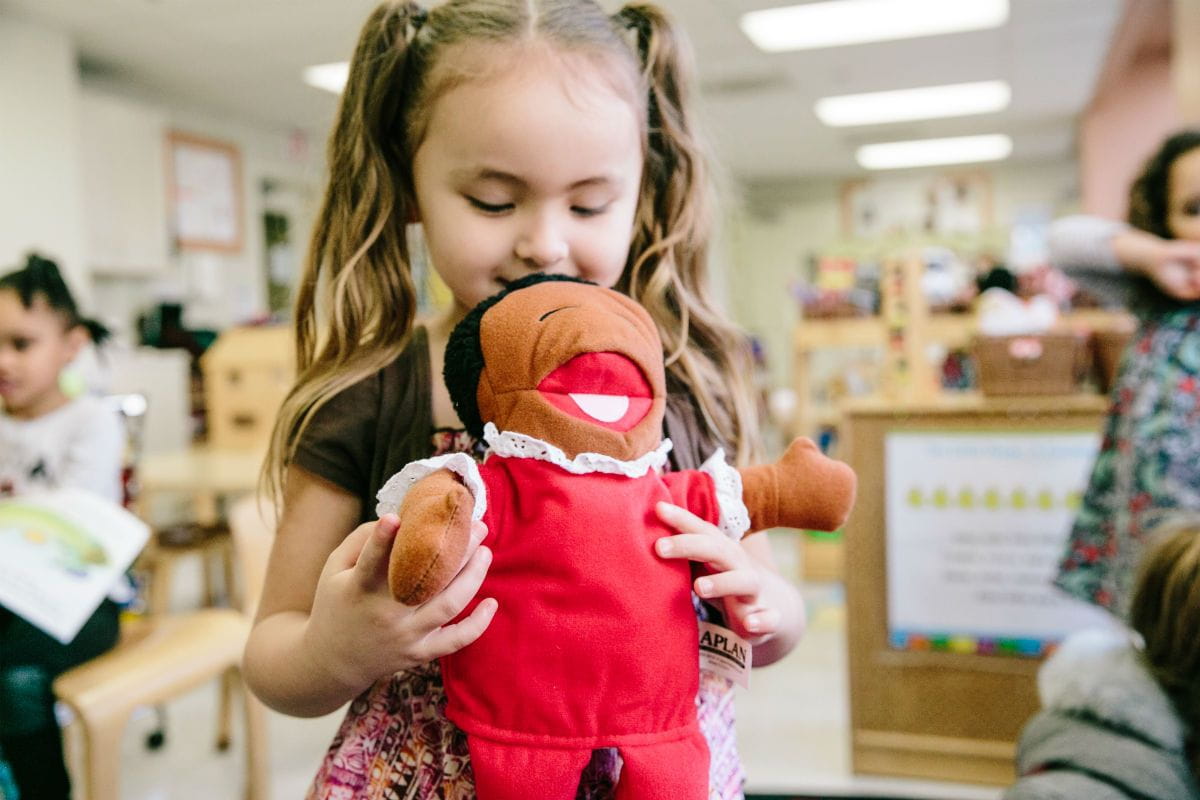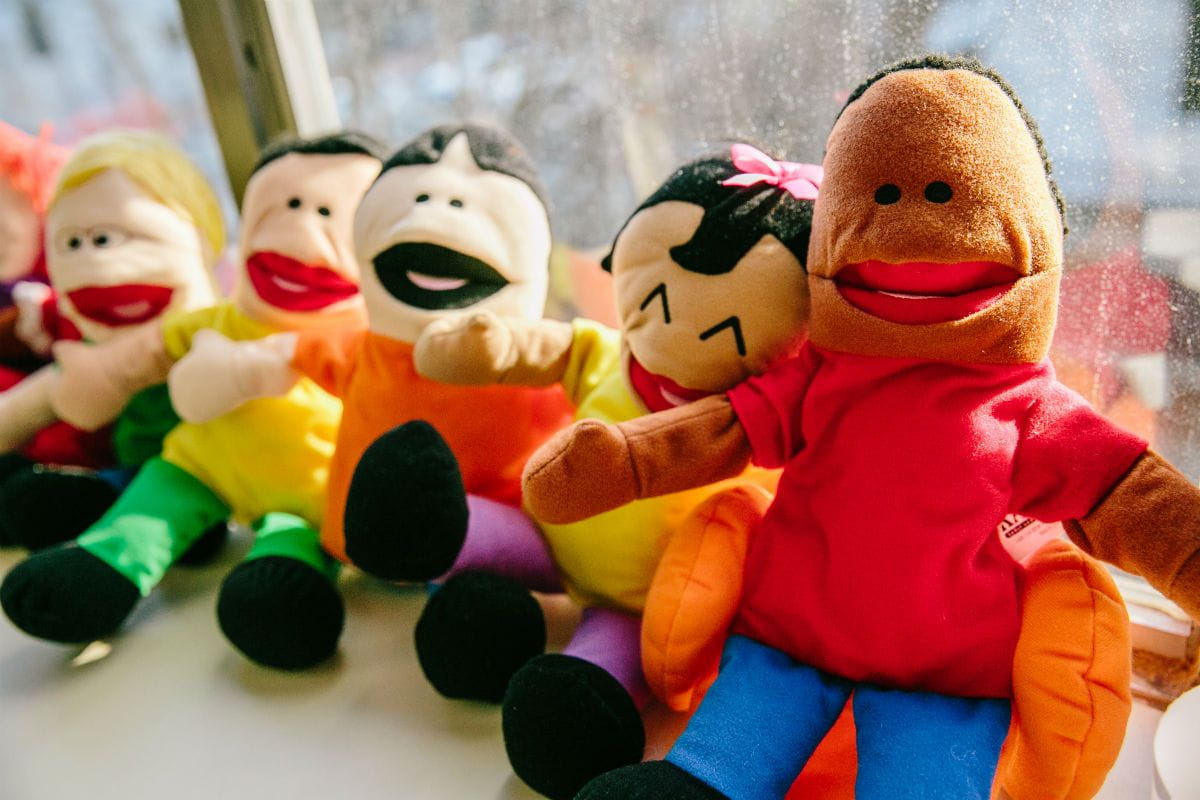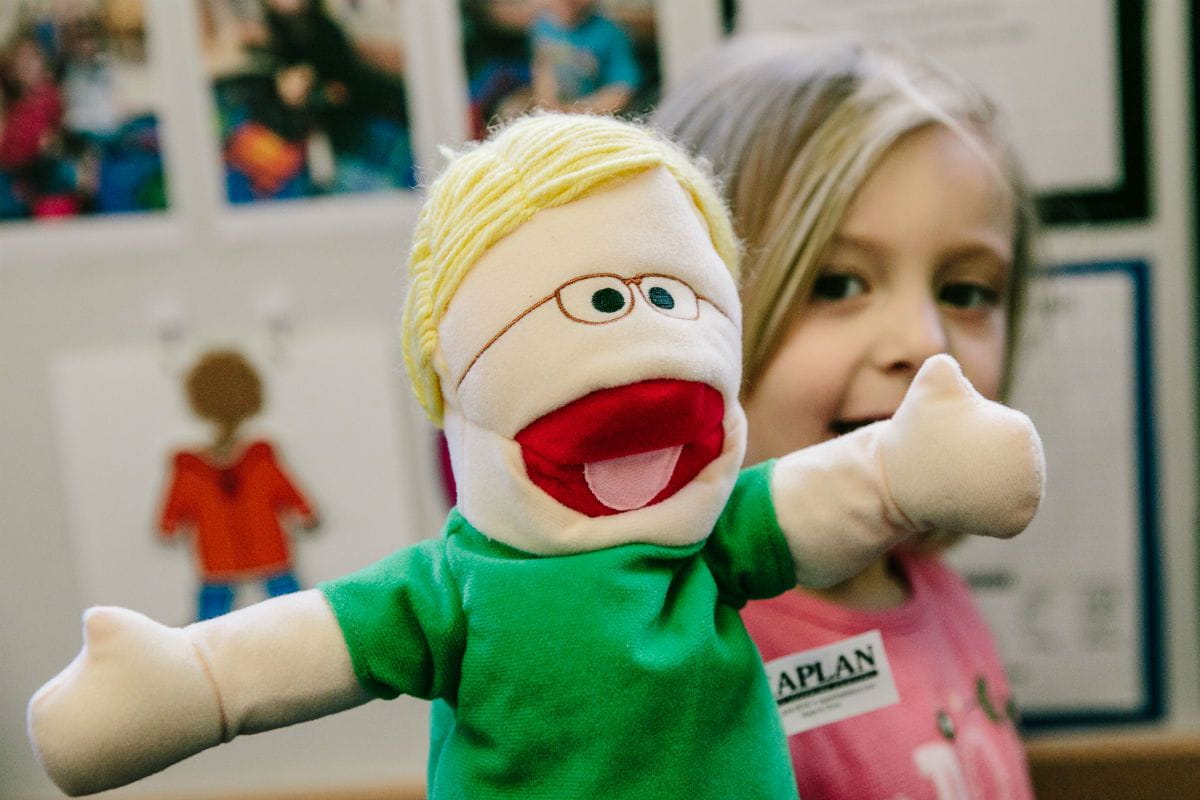The Power of Puppets: How Our Fuzzy Friends Help Kids Grow Social-Emotional Skills

By Carolyn Sweeney Hauck
Kermit, Pinocchio, Elmo, too: Puppets have a long history of delighting adults and children alike. But puppets have a unique power for children when it comes to explaining important social and emotional lessons. Why? They make everything a little less personal.
Take, for example, the three-year-old who has a really—really—difficult time sharing that firefighter costume with her classmates. When it’s dramatic playtime, she’s always the firefighter. And if one day someone else wants to take a turn at being a firefighting hero? Her response is, no way, no how, no can do. It’s a clear teaching moment about the importance of taking turns—but trying to resolve a problem with a three-year-old through conversation can be…tricky. Puppets to the rescue!
“In this case, our teachers can use puppets to act out the situation in an emotionally safe way,” says KinderCare’s Taunya Banta, KinderCare’s Individualized Education Services manager and champion of every ability, cultural background, and level of development in children. “Puppets keep social and emotional lessons from being too personal or shaming any one particular child. They’re an incredible tool for compassionate teaching.”

That’s why every KinderCare center features a bevy of adorable puppets of different ethnicities (as well as a training manual for how to use them): to help kids learn social-emotional skills in a fun, non-critical way. If a preschool teacher notes that, say, the class needs some more practice around listening to their friends, during circle time she might pull the puppets out and act out a scene involving listening. “Puppets instantly grab children’s attention,” Banta notes. “They put a smile on their faces, which makes the lessons we are trying to teach them that much easier to learn.”
But it’s not just the teachers doing all the puppetry! In KinderCare classrooms, puppets are always available in the children’s play areas, giving kids free rein to act out a situation or big feelings on their own. “Puppet play is really wonderful because it helps kids talk about something when they’re in a tight spot,” notes Claire Kessler, a program director at the Downtown Portland KinderCare in Portland, Oregon who daily uses puppets as a teaching tool.
It can be hard to help children navigate difficult emotions like anger or sadness, Kessler notes. (It’s even hard for many of us adults!) ”A skilled teacher who is tuned into the children in her class can help them process those feelings through puppets,” Kessler says, “especially when kids have experienced something they don’t want to talk about, or feel like it’s negative or worry they’ll get in trouble.”

KinderCare’s Banta also points out that young children simply don’t yet have the language to communicate abstract thought. “It’s just beyond their ability,” she says. Children can, however, be drawn to reenacting a problem situation through their plush puppet friends. As children role play with puppets, they’re also learning to see something from another person’s point of view, which teaches them how to be empathetic friends.
An added benefit? The fact that playing with puppets is also just straight-up fun acts as a stress reliever for everyone involved. Puppets delight us all, but in the hands of teachers (and children), their true power comes to light. They not only teach valuable social-emotional skills—they can also make virtually anything okay.




